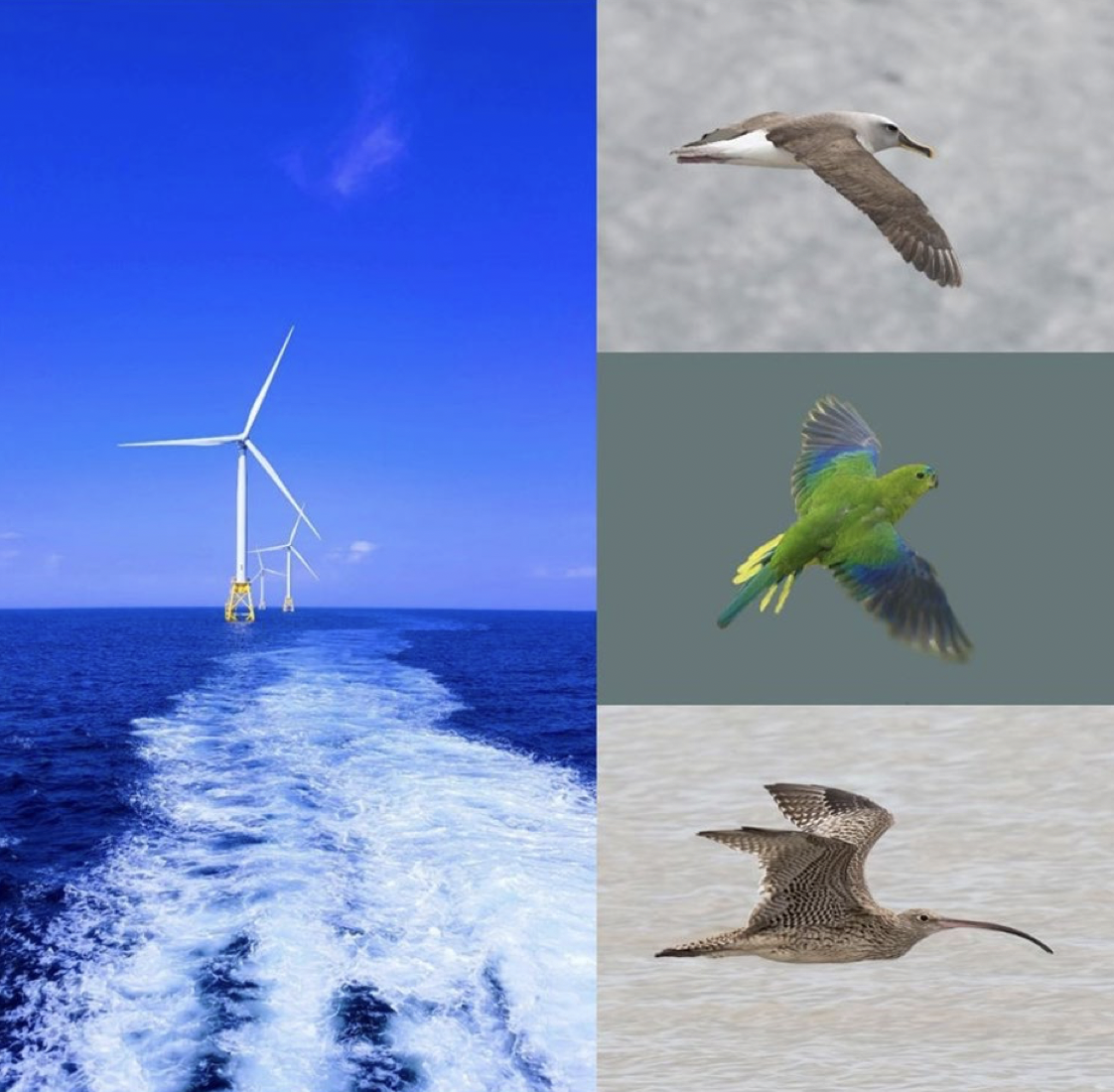 The cover photo from the report (clockwise L-R): Offshore wind turbines: Shaun Dakin; Southern Buller’s Albatross: Barry Baker; Orange-bellied Parrot: Mark Holdsworth; Far Eastern Curlew: John Barkla
The cover photo from the report (clockwise L-R): Offshore wind turbines: Shaun Dakin; Southern Buller’s Albatross: Barry Baker; Orange-bellied Parrot: Mark Holdsworth; Far Eastern Curlew: John Barkla
The Australian Government’s Department of Climate Change, Energy, the Environment and Water has released a report providing information and guidance for offshore windfarm developments in relation to their potential effects on local and migratory bird species.
The report, “Impacts on birds from offshore windfarms in Australia”, was prepared by Keith Reid, G. Barry Baker and Eric Woehler of Latitude 42 Environmental Consultants Pty Ltd and is presented in two parts:
- An ecological risk assessment, based on life-history and behavioural attributes of 272 birds, to identify which of those birds are at high risk from negative interactions with offshore windfarms in Australia
- A literature review of impact mitigation and management strategies implemented by wind farm operators in the northern hemisphere (mostly in Europe).
The Executive Summary follows:
“The aim of this report is to provide a definitive reference source for proponents and environmental impact assessors upon which the consideration of potential impacts of, and mitigation strategies for, offshore windfarm developments on birds can be based.
An ecological risk assessment, based on life-history and behavioural attributes of 272 bird taxa, was used to identify which of those taxa are at high risk from negative interactions with offshore windfarms in Australia. The marine area of Australia was divided by state/territory boundaries perpendicular to the coast, with Western Australia further divided into north and south, and the Bass Strait region on the Victoria coast and the north coast of Tasmania. These eight regions were subdivided in to coastal, inshore, and offshore subregions and a risk summary for all bird taxa occurring in each of these subregions produced.
High-risk species included critically endangered migratory shorebirds, albatrosses and migratory parrots that cross Bass Strait, as well as range-restricted endemic coastal nesting species.
Australia’s offshore wind energy industry is in its infancy and has a valuable opportunity to learn from the experience of processes and technologies that have been used to mitigate the impacts of wind farms on birds in Europe.
Despite differences in the species involved, the more extensive development of offshore windfarms in the northern hemisphere provides examples of best and emerging approaches to quantify and mitigate negative impacts of offshore windfarms that can be applied in an Australian context.
Compared to onshore installations there are logistical challenges to quantifying the potential and realised impacts of offshore windfarms that require different approaches to data collection and analysis. Technological solutions that are in use in the northern hemisphere, including radar, LiDAR and blade borne devices with cameras and microphones, are available to map bird distribution and activity around, and collisions with, offshore windfarms. Combining different approaches to maximise the utility of all available data to address seabird risks, will deliver more effective mitigation consistent with the aspiration of expansion in offshore windfarm infrastructure.
Taking a coordinated, regional-scale approach to the development of offshore wind farms in Australia will allow individual projects to be set within a structured plan that uses consistent methods and approaches, including sensitivity mapping, into which the data from individual windfarm projects/proposals can be integrated and the cumulative impacts on birds can be assessed.”
The report is available to download at the Department of Climate Change, Energy, the Environment and Water’s webpage in the resources section of the Environment Protection and Biodiversity Conservation Act 1999 (EPBC Act), here.
Reference:
Reid, K., Baker, G.B. & Woehler, E. (2022). Impacts on Birds from Offshore Wind Farms in Australia. Department of Climate Change, Energy, the Environment and Water, Canberra,. CC BY 4.0. https://www.dcceew.gov.au/environment/epbc/publications
6 March 2023

 English
English  Français
Français  Español
Español